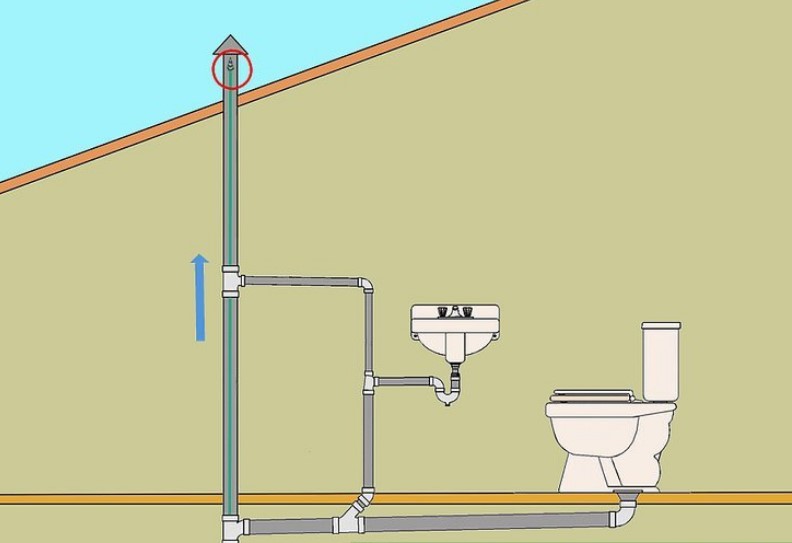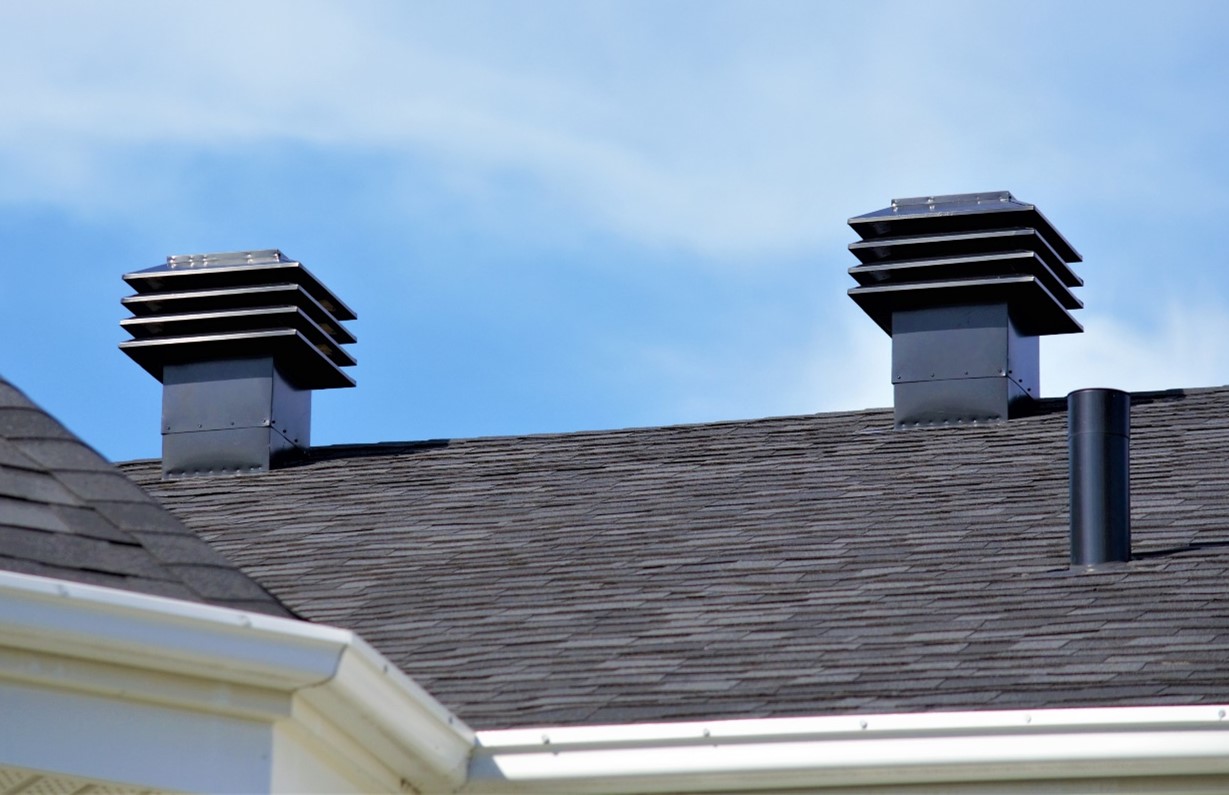Right here below you might get a bunch of excellent expertise regarding What Is A Plumbing Vent & How Do They Work?.

Correct air flow in plumbing systems is typically neglected, yet it is essential for maintaining the performance and security of your home's plumbing. Ventilation aids control atmospheric pressure, stop the buildup of hazardous gases, and guarantee the effective elimination of waste. In this guide, we will certainly check out the relevance of proper plumbing ventilation, how it works, and the advantages it brings to your plumbing system.
Comprehending Air Flow in Plumbing
Ventilation in pipes describes the network of pipes that allow air to flow through the drain system. These vents serve multiple purposes, including controling air pressure within the pipes, stopping drain gases from entering the home, and aiding in the smooth flow of wastewater.
How Ventilation Works in Pipes Equipments
Air Pressure Guideline
Proper air flow preserves balanced air pressure within the pipes system. When water streams via pipelines, it displaces air. Without appropriate ventilation, this displacement can produce unfavorable pressure, resulting in slow drains pipes or siphoning of water from traps, which can cause undesirable odors to leak right into the home.
Stopping Sewage System Gas Buildup
One of one of the most crucial features of pipes vents is to prevent sewer gases, such as methane and hydrogen sulfide, from gathering within the home. These gases can pose major health and wellness threats and are very combustible. Vent pipes allow these gases to get away securely outdoors.
Helping in Waste Elimination
Air flow helps in the reliable removal of wastewater by protecting against airlocks in the water drainage system. When air can flow easily with the vents, it permits water and waste to move smoothly via the pipelines, decreasing the danger of clogs and back-ups.
Kinds Of Plumbing Vents
Key Heap Vent
The main pile vent, also known as the air vent pile, is the main vent in a pipes system. It prolongs from the main drainpipe line up via the roofing, allowing gases to run away and fresh air to go into the system.
Branch Vent
Branch vents attach to the main pile air vent and offer specific components, such as sinks, commodes, and showers. These vents make sure that each component has adequate ventilation to function correctly.
Air Admittance Valve (AAV).
An Air Admittance Shutoff (AAV) is a one-way shutoff that permits air to get in the pipes system without the need for a typical air vent pipeline extending through the roof. AAVs are commonly utilized in restorations or locations where mounting a standard air vent is not practical.
Signs of Poor Ventilation in Pipes.
Slow Draining Fixtures.
If your sinks, bathtubs, or toilets are draining pipes slowly, maybe an indication of inadequate air flow. Inadequate air circulation can produce a vacuum result, making it challenging for water to drain pipes appropriately.
Gurgling Sounds.
Gurgling noises originating from drains are usually an outcome of air being sucked through water traps because of negative pressure in the pipes. This is a clear sign of not enough ventilation.
Undesirable Odors.
Drain smells inside your home are a warning that your pipes system is not appropriately ventilated. This could imply that sewage system gases are not being properly aired vent outside, bring about possibly harmful conditions.
Usual Ventilation Errors.
Poor Vent Sizing.
Using small air vent pipes can cause inadequate air flow and pressure imbalances in the system. It's necessary to make use of vents that meet the certain requirements of your plumbing system.
Improper Vent Positioning.
Putting vents as well far from the components they serve can lower their performance. Correct positioning ensures that air can flow easily and successfully through the system.
Ignoring Code Needs.
Building regulations give particular standards for plumbing air flow. Ignoring these codes can result in a system that fails to function appropriately and might cause costly repair services or health hazards.
Advantages of Proper Air Flow.
Enhanced System Performance.
Correctly aerated plumbing systems operate a lot more efficiently, with fewer blockages, faster draining, and less stress on the pipes. This effectiveness expands the life expectancy of the plumbing system.
Improved Air High Quality.
By protecting against sewer gases from entering your home, proper ventilation adds to better indoor air quality, making your living atmosphere healthier and extra comfortable.
Preventing Water Damages.
Adequate air flow assists avoid water from being siphoned out of catches, which can bring about drain gases entering the home and creating water damage with time.
Steps to Make Certain Appropriate Air Flow.
Consulting Plumbing Codes.
Constantly speak with regional pipes codes when developing or customizing your plumbing system. These codes give the necessary guidelines for appropriate airing vent and ensure your system satisfies safety and security criteria.
Normal Assessment and Maintenance.
Routine inspections can assist identify prospective ventilation problems prior to they come to be significant issues. Maintenance tasks, such as cleaning vent pipes and looking for obstructions, are essential for maintaining the system in good working order.
Specialist Installation.
For new setups or significant modifications, it's wise to employ a specialist plumbing professional. They have the expertise to make certain the ventilation system is properly created and set up according to code.
Conclusion.
Correct air flow is a critical component of any type of plumbing system, guaranteeing that it works effectively and safely. By recognizing the relevance of air flow, recognizing the signs of inadequate air flow, and taking steps to keep your system, you can avoid costly problems and shield your home's air high quality.
4 Things You Should Know About Your Plumbing Vents
What Plumbing Vents Are
Also called a vent stack, a plumbing vent is a vertical pipe attached to your drain line that runs through your roof. The plumbing vent pipe, or plumbing air vent, removes gas and odors from your plumbing system and allows fresh air to enter the pipes, helping the water to flow out of the drain pipes.
What Plumbing Vents Do
Plumbing vents have two basic functions. One of which is to allow unpleasant smelling wastewater and sewer gasses to escape your plumbing system instead of entering your home. Plumbing vent pipes are typically located on roofs, away from windows, to ensure the fumes exit the home completely.
The other function of the plumbing vent is to move fresh air into your plumbing system. This helps move water through every plumbing fixture in your house, like toilets and sink drains. Think of the way in which you need to let a little air into the bottle as you pour soda in order to make the drink flow smoothly.
Different Types of Plumbing Vents
- True vent: This is the most common vent option. In simplest terms, a true vent is a vertical pipe attached to your drain line that exits through the roof. They often function as the main vent that other fixtures can connect to.
- Re-vent pipe or auxiliary vent: Attached to the drain line near specific plumbing fixtures, re-vent pipes run up and over to connect to the main vent.
- Common vent: Two plumbing fixtures installed on opposite sides of a wall are typically tied into the vent stack using something known as a sanitary cross.
- Wet vent: This venting option operates as a drain pipe and a vent at the same time. Wet vent drainage systems drain water from one fixture while venting the air from another. Although they’ve been used for over 100 years, wet vent systems have only recently been added to the plumbing code in many areas. If you’re planning on installing one in a bathroom remodel, make sure you check your local code prior to construction.
- Loop vent: For free-standing fixtures like kitchen island sinks, loop vents are ideal. These vent pipes run under the floor, rise from the P-trap, and create a loop inside the cabinet sink.
- Air admittance valve: An AAV is a one-way mechanical valve typically installed at the site of the plumbing fixture. AAVs allow venting to occur without having to tie into a larger venting system. They’re ideal for venting fixtures where you aren’t able to easily connect to an existing vent system.
Common Plumbing Vent Issues
Although vent pipes typically don’t have water flowing through them, they’re still subject to many typical plumbing issues. For example, clogs are one of the most common problems associated with sewer vent pipes. If your vent pipe gets clogged, all of your plumbing fixtures tied into the vent stack will be affected.
A sink with a slow drain that bubbles and gurgles or a strong sewage smell around your toilet are both indicators that your toilet vent pipe is clogged. Because most vent pipes exit through the roof, old leaves, twigs or even a bird’s nest could be clogging the pipe.
Clogs in your vent pipe system cause a buildup of negative pressure, meaning that water won’t be able to flow out of your home very well. It’s similar to putting your finger over the opening of a straw to trap water inside. When you remove your finger, the water is able to flow out of the straw.
If you suspect you have any blockage in your vent, make sure you have a professional come examine the situation. Left unchecked, a blocked air vent can lead to other costly repairs, like leaks and sediment buildup.
Under Pressure
Pipe vents are essential aspects of a home’s plumbing system. Owning a home means learning about all sorts of things you never put much thought into before. But by understanding as much as you can about the important systems of your home, you can keep those budgets intact and those anxiety levels low.
https://www.homeserve.com/en-us/blog/home-improvement/plumbing-vents/

I'm very fascinated by What Is A Plumbing Vent & How Do They Work? and I'm hoping you appreciated the article. Do you know another individual who is intrigued by The Upsides of Proper Ventilation in Plumbing Design? Please feel free to share it. I treasure your readership.
Book Instantly
Comments on “Exploring The Value of Correct Ventilation in Plumbing Systems”